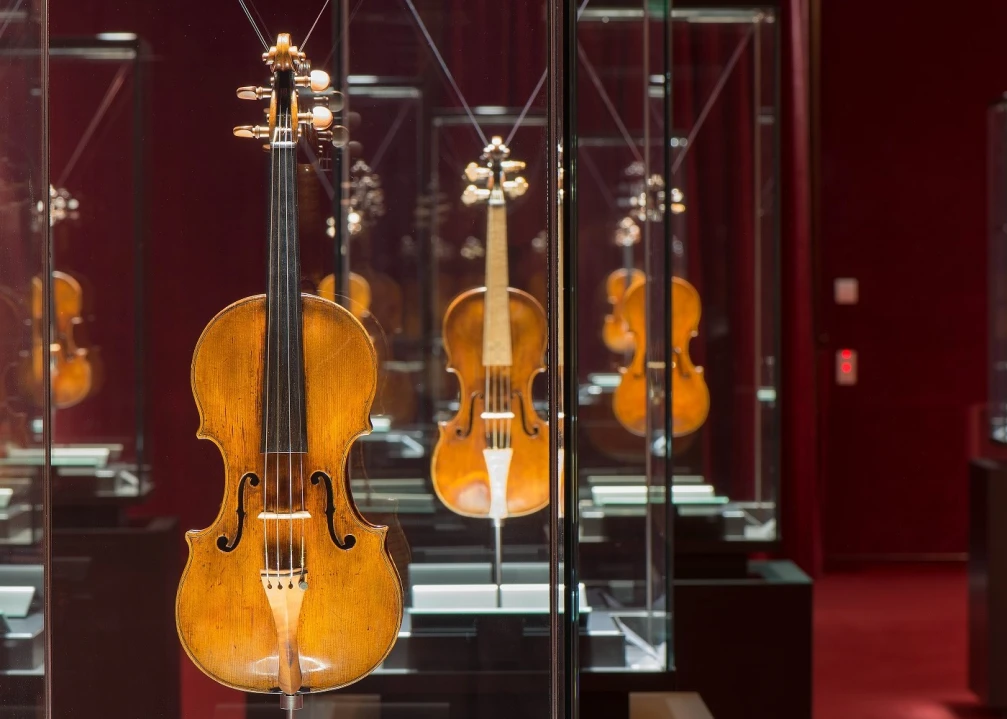What makes the sound of one violin preferable to another? Do some Stradivarius violins really have a special sound? To answer these questions, a multidisciplinary team coordinated by the CNR involved 70 violin makers in a listening experiment to evaluate the sound qualities of four violins, including a Stradivarius.
The results, published in The Journal of the Acoustical Society of America, suggest that what makes the Stradivarius the preferred sound is a particular balance in the instrument's timbre properties. balance in the instrument's timbre properties.
Stradivarius violins are recognized worldwide as an excellence in craftsmanship, a model for violin makers and a mirage for collectors and musicians. However, several researches show that experienced violinists, when blindfolded, seem to prefer modern violins to these instruments. The experiment devised by Carlo Andrea Rozzi of the CNR Institute of Nanoscience (CNR-Nano), Alessandro Voltini of the International School of Violinmaking "A. Stradivari" in Cremona, Fabio Antonacci of the Polytechnic of Milan, Massimo Nucci and Massimo Grassi of the Department of General Psychology of the University of Padua (UniPadova), helps to clarify this apparent paradox. The researchers invited 70 Cremonese violin makers to analyze and evaluate comparatively the sound timbre of four violins - two modern, one factory-made and one Stradivari - with respect to the sound of a reference Stradivari violin. Based solely on listening to five notes, listeners showed a marked preference for one violin in particular, in this case the Stradivarius. The researchers then identified a sort of 'signature' that distinguished the sound of the preferred violin from those considered less pleasant. "Thanks to an in-depth analysis of the descriptions provided by listeners and vibro-acoustic measurements made on the instruments, we were able to describe the preferred sound as one that has a particular balance of 'openness', 'clarity' and 'nasality'," clarifies Carlo Andrea Rozzi of CNR-Nano, first author of the study.
"This is a double-blind listening experiment, that is, conducted without the listeners and us experimenters knowing which violin was playing at the time of listening," explains Massimo Grassi of UniPadova. "We used a very simple sound stimulus, the musical scale, so that judgments were guided only by the timbre of the violin and not by other factors such as 'liking/antipathing' a particular piece played."
"Establishing which aspects of sound contribute to the pleasant timbre of an instrument is important for violin making," stresses Fabio Antonacci of the Politecnico di Milano, "as it paves the way for the realization of instruments with desired timbral properties. The vibratory measurements carried out on these violins are also intended to prospectively build a data repository to estimate the relationship between the instrument's vibratory modes and timbre."
"The results suggest that not all instruments are created equal, regardless of whether they were built by Stradivari, but rather that qualities can be found in the timbre of an instrument that make it more appreciated by listeners," adds the CNR-Nano researcher. The experiment was conducted under the sign of excellence: thanks to the availability of the Municipality of Cremona, the researchers had at their disposal violins from the Historic Collection of the Violin Museum of Cremona and the excellent acoustics of the Auditorium hall for the listening tests. "The numerous and attentive participation of master violin makers and students of the International School of Violin Making allowed us to obtain very reliable data," concludes Rozzi.



